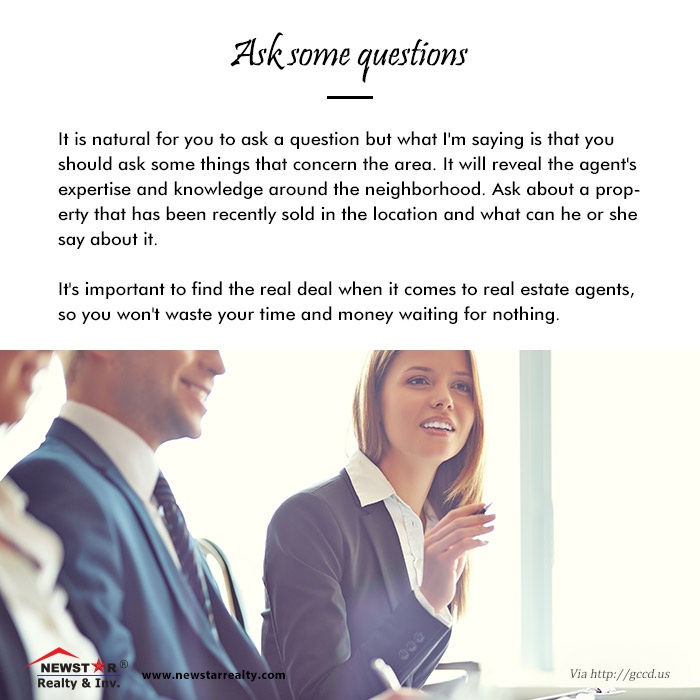
Tag Archives: real estate agent
Thinking of Selling Your House
Korean Real Estate
미주 부동산의 스위치를 켜다!
부동산 사고팔 때는 뉴스타!
미주부동산의 빛나는 미래를 위해 뉴스타에서 불을 밝혀 드립니다.
큽니다. 대단합니다. 장합니다. 꿈을 만들고 이루는 기업입니다.
믿음,성공,근면,성실의 뉴스타부동산에서 강점을 가지십시오.
부동산 회사 선택이 성공의 지름길입니다.
미주 부동산의 미래를 이끌 든든한 희망을 드리겠습니다.
4 Surefire Tips for Better Listing Photos
Simply understanding how to use a few key camera settings and pieces of equipment can make all the difference.

It can’t be stressed enough: Great photos help sell homes. The National Association of REALTORS®’ own research shows that well over 90 percent of home shoppers look online for at least a part of their search. For almost half of all buyers, accessing digital listings is the very first step in their process. And while there’s been much speculation as to the homebuying behaviors of millennials, this much is known for sure: Digital natives are much more comfortable with browsing home listings from mobile devices.
None of this is breaking news, but it does highlight just how important digital representation can be when you’re trying to show a home. One industry study found that when listings were accompanied by high-quality photos taken with professional equipment, they spent significantly less time on the market and fetched a premium of $3,400 on average.
Unfortunately, interior shots pose a variety of photographic challenges that are difficult for amateur photographers. Real estate pros shouldn’t be expected to transform overnight into professional camera wielders, but you can certainly benefit from a few tricks up your sleeve and some decent equipment.
Don’t Turn Toward the Light
This scenario might feel familiar: You want to show off the new windows in your client’s living room, but every time you snap a photo, the image is totally blown out. Photos with dark foregrounds and overexposed windows are a common problem that happens when ambient light from the outdoors tricks the camera’s light meter into overcompensating. A flash will balance out the lighting in the room, giving you a better shot. Alternatively, you can use your camera’s manual controls and settings. The right settings depend on the kind of equipment you have, however. For many point-and-shoot digital cameras, it’s mainly a matter of adjusting the ISO, although you may want to set the aperture to f/2.8 as well, if your camera offers that flexibility. For shots near a window, typically an ISO setting of around 400 to 800 works well, although you may want to go higher if you have particularly low light in the foreground. If you have full manual control of your camera, you can increase the shutter speed, which will allow less light into the camera sensor.
Try HDR Tonemapping
The main problem with photographing daylit interiors is that it’s difficult to balance between ambient daylight, artificial lighting, and dark shadows behind walls and in rooms away from the foreground. This situation presents a range of different exposures, and while the human eye automatically adjusts for the various levels, the camera will have a hard time making sense of it all. HDR, which is short for high dynamic range, is a common tool for handling such lighting situations. In essence, the photographer takes three or four photos in rapid succession, which are then combined into one image using specialized software like HDRSoft. Usually, one shot is at normal exposure, one is overexposed, and one underexposed. When those three exposures are combined into one, you’ll see all the details that the human eye can perceive. This results in photos with a vibrant, luminous quality.
Many point-and-shoot cameras have an exposure value meter, which can help you compose under- and overexposed shots. Generally, the meter reads a value of zero on the normal setting, +1 or +2 for overexposed shots, and —1 or —2 for underexposure. Use a tripod so you can play with different exposures while maintaining the same angle on each shot. You’ll also want to make sure automatic flash is turned off for this method. It takes time to perfect this technique, of course, but it can help you capture more detail in challenging settings.
Buy the Right Equipment
Unless you have a surgeon’s steady hands, you’re going to need a tripod in some situations. A tripod helps compose poised shots and avoid blurry photos, but it’s also incredibly important if you’re dabbling in HDR or mixing up shutter speeds. The longer your exposure time, the more likely it is that subtle movements will show up in the final product. You should use a tripod anytime you nudge the ISO to a higher range. Also, if you’re taking wide shots of the home’s exterior or enlarging your photos, even the tiniest shake will be a lot more obvious. In certain conditions, even the slightest breath can create a shaky shot. Avoid this dilemma with a lightweight foldable tripod.
You may also want to invest in a point-and-shoot with a wide-angle lens. When buyers are browsing through real estate listings, they really want to get a sense of the space. But that’s difficult to translate into photos unless you have a wide-angle option. This is important not just for exterior shots but for indoor compositions as well. A wider lens in the interior gives rooms a sense of luxury and space that you just can’t get with a regular shot. Point-and-shoot cameras that have a large range in their focal length specification are ideal; the lower the value at that end of the range, the wider the shot will be.
If you’re really interested in refining your shots, you’ll want a camera with manual controls that allow you to adjust shutter speeds on your own. Or it may be time to graduate to a digital single-lens reflex camera, especially if you want to experiment with wide-angle lenses (with focal lengths under 35mm, used for very wide shots). DSLRs have come down in price recently, especially since manufacturers like Canon and Nikon have introduced entry-level DSLRs aimed at beginner photographers. Usually these run for around $300 to $700, and they are available with bundled lens kits to get you started trading out lens lengths for sharper photos.
Get Rid of the Clutter
Staging photos ahead of time by cleaning off counters, tabletops, and floors can turn an ordinary listing into a real stunner. Clear your photography appointment with your client before you arrive, and tell them to clean, clean, clean. Even a detail as minute as a crooked picture frame or a rolled carpet edge can detract from your photos, so be sure to run over your shots with a fine-toothed comb. Decluttering means no power cords or vacuum cleaners in the shot—but it doesn’t mean completely sterile surfaces. A few welcoming touches like a stack of books, a vase of flowers, or a set of candles will make the space feel lived-in and homey. After all, that’s what you’re really selling anyway: a vision of buyers’ future lives in a new and welcoming abode.
Erin Vaughan is a blogger, gardener, and aspiring homeowner. She currently resides in Austin, TX where she writes full time for Modernize, with the goal of empowering homeowners with the expert guidance and educational tools they need to take on big home projects with confidence.
Thinking of Selling?
Buying a Home in 2017? we can help
How to Deal With Noisy Tenants in Your Apartment Building

Every renter deserves peace and quiet. But people interpret “quiet” in different ways, which can lead to uncomfortable situations for landlords.
For example, consider this true story that I call “The Case of the Midnight Guitarist.” The landlord, a friend of mine who owns several properties in California’s San Lorenzo Valley, told me about a musician who lived in one of two rental units in a quiet, creek-side setting.
“One day I received a noise complaint from the tenants in one of the units. It seemed the renter in the other unit had a habit of unwinding from a long day at work by practicing guitar. Unfortunately, his guitar was electric and had to be plugged into an amplifier to be heard. He would play what he thought were peaceful riffs well into the night. My other tenants didn’t think the riffs were peaceful.”
My landlord friend asked the guitarist to wear headphones, but he refused. All the renters had signed a standard rental agreement that failed to address noise issues, so my friend faced a quandary: How to ensure that every tenant experienced quiet enjoyment without violating the guitarist’s rights?
What is Quiet Enjoyment?
An implied warranty between the tenant and landlord, a provision for “quiet enjoyment” may contain the word “quiet,” but that doesn’t necessarily proscribe noise. It simply means that the tenant is entitled to undisturbed use of the premises. Courts read this warranty into every lease, whether or not it’s expressly stated.
Among the benefits it guarantees are:
- Use of all amenities supplied with the unit.
If an appliance breaks, the landlord has to fix it. - Unimpeded access to the unit.
The landlord is expected to keep the driveway clear and all doors and lock sets in good working order. - Freedom from intrusion.
In the absence of lease violations or overt damage to the premises, tenants have a right to privacy, which includes freedom from an unreasonable number of landlord visits. - Peace and quiet.
The landlord must address any disturbing noise within his or her control, such as a chirping smoke alarm.
One Person’s Noise is Another’s Music
It’s difficult to make everyone happy all the time. In the case of the midnight guitarist, one set of tenants was disturbed. But the guitarist viewed the noise he created as inspiring. As far as he was concerned, his guitar playing constituted quiet enjoyment of the premises.
After my friend received several complaints, he voluntarily granted the aggrieved tenants a rent reduction to encourage them to stay. My friend lost money, because of his failure to address noise in the lease.
A properly worded lease can provide much-needed leverage.
The landlord’s bottom line was affected the most, because he failed to address noise in the lease.
Avoid Generic Rental Agreements
My friend used a generic California rental agreement downloaded from the internet. It contained no specific quiet enjoyment clause and did not address noise at all. Covering little more than rental payments, late fees, and security deposits, it left most other issues—such as maintenance and usage guidelines—open.
There’s nothing “free” about a free lease template. It’ll cost you thousands of dollars in damages.
More sophisticated leases usually contain a quiet enjoyment clause, but it generally covers the use of the unit itself—not the impact of the tenant’s use on other renters. It is possible, however, to include language concerning noise in that clause. Moreover, the clause can contain a caveat, such as “subject to all terms and provisions of this lease,” and the lease can address potential disturbances in a separate clause.
Enforce Quiet Hours
An effective way to ensure equal enjoyment of quiet time for all tenants is to specify hours during which noise is to be kept to a minimum. These hours may differ on weekdays and weekends, but they typically begin at 10 p.m. The lease should specify that “quiet time” applies to guests as well as tenants.
Also check with your local county or town code enforcement office. They might already have noise ordinances in place, which you could enforce. The great thing about noise ordinances is that if a tenant doesn’t comply, you can call the police and they will enforce it for you.
Resolving Disputes
Even if all renters agree to a “quiet hours” clause, it can be difficult to resolve a dispute. Different people tend to have different noise thresholds.
Landlords typically use some of the following criteria to help them adjudicate noise complaints:
- Multiple complaints.
Has more than one tenant complained? Multiple complaints carry more weight than one from a (possibly oversensitive) individual. - Recurring issues.
Are complaints recurring? This points to a pattern of willful disturbance. - Source of the noise.
Is the noise a product of everyday activities? An 80% carpet rule can help prevent noise disturbances in the case of multistory dwellings. - Actions to remedy.
Have any steps been taken to address the source of the noise? The Midnight Guitarist, for example, may have tried turning down the volume. - Documentation and credibility.
Has the complaining tenant documented instances of disturbances? Dates, times, and estimates of noise levels are all helpful.
Penalties
The quiet hours lease clause should also specify penalties for violation. Eviction should be an option but not the only one. A monetary penalty should prevent recurrences in most cases.
A Sample “Quiet Enjoyment” Clause
While the exact language to use in a quiet hours clause may vary from state to state, a typical one might look something like the following:
Quiet Enjoyment. The tenant may live in and use the apartment without interference subject to this lease. Tenant may not disturb the quiet enjoyment of any other tenant in the building or surrounding neighbors. The tenant is responsible for adhering to the building’s quiet hours. Quiet hours are from (Insert Quiet Hours for Property) on weekdays and from (Insert Quiet Hours for Property) on weekends. If tenant violates the quiet hours policy on three separate documented occasions, the tenant is in violation of the lease agreement. The landlord reserves the right to charge the tenant a penalty of $ (Insert Dollar Amount) and/or evict the tenant, the decision of which is the sole right of the landlord.
Credit to Chris Deziel
Chris has owned and managed 4 rental properties in Santa Cruz, CA, and Salida, CO. He is a DIY handyman expert for popular sites like Pro Referral.
How to Pick The Right Real Estate Agent
Don’t Be the Reason Your Clients Break Up

Like most people, real estate agents want to feel the love — especially when it’s coming from clients. But in a stressful, emotional time, buyers and sellers are sometimes more likely to take their anxieties out on you than show their appreciation. You could be on the receiving end of an angry rant, peppered with questions that reveal a client’s lack of trust, or worst of all, the client could ghost you. You probably don’t see why they are so upset, but before you write your client off as crazy, try to figure out where their fear is coming from.
Every relationship needs good communication, and as a real estate agent, you need to be a master at it. If you don’t take extra care to communicate often and to all parties involved, you risk your clients feeling uncertainty, fear, and eventually anger. We live in a busy world, and clients may be distracted by their phones, kids, or other stressors. This is why we often find ourselves repeating things and answering the same questions multiple times. Here are a few things I’ve learned to do to perfect my communication with clients.
When you’re dealing with a couple or clients who are including others in their decision-making process, always copy all parties on emails about the transaction. This is why email is my favorite way to share important information — even if I’ve been texting with clients all day or I have them in a room face-to-face. If you put your thoughts in writing to everyone, you can refer back to the email if they start asking questions you’ve already answered. At the beginning of the transaction, give buyers and sellers a guideline and timeline of what to expect. Be clear about what happens when, and what they need to do to keep the transaction on track. For extra-anxious clients, this will be comforting to have on hand.
Don’t assume your clients are sharing everything with their spouse. If you’re working with a couple and maintain contact primarily with one of the parties, you shouldn’t assume they’re passing on the information you’ve given them to their significant other. It’s sad but true that people don’t communicate with each other. I often find myself on the phone or in person with one half of the couple, and we’ll discuss priorities, make decisions, and plan to move forward according to that conversation. But unless I explicitly communicate what has been discussed or decided to the other half, that person might never know. One email should be sent to both parties, going over the conversation you had with one of them and the next steps you will be taking.
When you’re working with an unmarried couple but only one is buying or selling, give them both equal priority — up to a point. Usually, I ask for both my client and their partner’s contact information, and I include them on emails regarding the home search or any information about showings. But I don’t include the partner on the specifics of the transaction. Since they aren’t officially part of it, it’s up to my client to share whatever they want with his or her partner. If you do include the partner in all that you can, though, you will make them an ally. They appreciate being seen and respected, even without an official stake in the transaction.
Be obsessively careful to balance communication with divorcing clients or an estate with hostile heirs. If one party of the transaction feels you are favoring another, telling secrets, or not working in everyone’s interest, they will make the entire transaction 10 times more difficult by questioning everything, refusing to compromise, or going silent on you. When hurt feelings are involved, someone always feels like they are losing the most — and sometimes everyone feels this way. It’s easier to speak primarily with the party that is kind, reasonable, and willing to negotiate, but it is essential that every communication you send is copied to all parties.
Also, be careful to not stir the pot, even unintentionally. For instance, in a divorce, one party may have moved out of the house. If the person who doesn’t live there anymore asks how the showings are going and if the soon-to-be-ex is keeping the house show-ready, do not reply and copy the other spouse on the email. Send a new email to both parties with the showing feedback you’ve received and a reminder that the property must be show-ready at all times. Keep your communication neutral.
We all have been guilty of not communicating with our clients as well as we should. Maybe they are past clients who are working with you again, so you figure they know how the process goes. Or they’re a couple who you assume must be sharing important information with each other. That’s when you get in trouble. When someone isn’t happy with your service, it’s all your fault. If you mess up, don’t try to talk your way out of it. Apologize sincerely. It goes a long way in making things right again.
4 Ways to a More Honest Sales Relationship
You’ve got the skills prospects are looking for, but to truly connect with them, you have to stop being a salesperson.

What does it take to really connect with someone, to have them feel comfortable with you and truly trust you? Those are the people who will end up your customers for life, and those relationships will open doors to a multiple number of other contacts. But it takes being more than a good salesperson to connect with prospects on that level. Here are four strategies to build a deeper, purer relationship with potential clients.
Connect With Your Client, Not the Other Way Around
Your actions are most natural when you feel relaxed and confident in your own skin, and people can connect to that. But no matter how well trained you are, you’re not in your most natural state when you’re trying to make a sales pitch. Instead of trying to get a prospect to connect with you and your services, sometimes the best way to facilitate actions that are pure is to connect to them first — by listening.
When prospective clients ask me about what I do or how my experience will help them, I usually highlight the most important points of my job, as if I only have 60 seconds with them in an elevator. Then I say, “Before I get into more detail about that, I’d like to explore more about what your goals are.” I always turn it back on them until I have a good understanding of their key needs. Keeping the focus on the client allows you to customize your approach and gives you insight on when to move the conversation forward or back off.
That approach has also helped Lisa Lang, sales associate at Keller Williams Suburban Realty in Livingston, N.J. She says it’s imperative, especially in the beginning of a client relationship, to do more listening than talking. “I need to gain their respect and trust immediately. Otherwise, our relationship will falter,” Lang says. “Listening to them is a must. I have to hear what they have to say and what their needs are, and learn what kind of personality they have. I try to make our first meeting as casual as possible, whether it’s at an open house or at my office.”
Lang lets prospects drive the initial conversation, talking about more than just their real estate needs but also their families, current location, people they are affiliated with, and any common bonds she may share with them. “Once they feel at ease, everything else comes naturally,” she adds. “I never try to be someone I’m not.”
Stop Caring About the End Result
There is a saying I’ve tried to follow that is difficult to understand at first but has tremendous benefits for lasting relationships: “Those who desire nothing possess everything.” Now this doesn’t mean you don’t care for your customers or don’t have goals and dreams. It has to do with getting rid of your personal attachments and working from your true gut; it’s an approach to business and life that’s good not only for your success and peace of mind but also for your customers.
Too much caring and desire for winning get in the way of the performance. Your action is pure and comes naturally without thought. The key is detachment: Don’t think too much about it and just do it. When you don’t care so much about the end result, you can be at ease, and that’s when people feel comfortable around you.
One of my favorite books on this subject is Zen in the Martial Arts by Joe Hyams. Hyams tells a story of training with his sensei, who instructed him to punch a baseball mitt the sensei was wearing. As soon as Hyams got ready to punch, he tensed up. His sensei was aware of his intention, and he moved the mitt before Hyams could strike it.
“Relax,” the sensei said, according to the book. “Stop straining. The less effort, the faster and more powerful you will be.” As soon as Hyams relaxed his body and mind, he hit the target.
His sensei told him, “You stopped caring whether you hit or not. It is the caring or desire which stands in the way of effortless effort. You must stop caring about doing it and just do it — effortlessly and naturally as snow falls from the tree or water bubbles up from the spring.”
Eye Contact Is Powerful
We always hear how important it is to maintain eye contact. When you’re making a point or listening to your customer, it enables you to deliver the message with sincerity or see the truth in your customer’s eyes.
“The essence of the [client] relationship is how the transaction begins,” says Hal Maxwell, president of Coldwell Banker in New Jersey and Rockland County, N.Y. “You must build a relationship with trust and understanding immediately. You do that by eye contact, by being honest, by being who you are, telling people the truth and not just what they want to hear. If you’re sitting across from somebody who bought their home, and they paid at the height of the market, you can’t sugarcoat that. You have to tell them the truth, and you have to have something to show them and back it up.”
The truth may make your client angry, Maxwell says, but the anger isn’t directed at you. But your client’s anger will be about you if you tried to hide the truth. “Three or four months down the road, you come back and tell them that they have to do a major [price] reduction, and then they get mad at you because you didn’t tell them the truth up front.”
Maxwell says his company lives by three rules:
- No commission is worth your reputation.
- Do the right thing.
- When you give your word, you keep your word.
Follow Up
This is the glue that keeps the relationship together. Whether it’s a simple handwritten card thanking the individual for their time and business, or specific actions you take to ensure the long-term success of your client. Following up with a client after the sale is critical so they see that you’re there not just for a commission but to make sure they’re satisfied long with their decision.
This often leads to new business, referrals, testimonials, and a solid reputation. Email and other forms of follow-up are key, but an in-person meeting is the most powerful — where body language, eye contact, and a handshake can make all the difference.
“In this increasingly digital world, where email and texting have become the standard for business communication, the personal connection of a call — and, even better, a meeting — is more powerful than ever,” says Brian Stolar, president and CEO of real estate development firm The Pinnacle Companies. “One good meeting can be vastly more effective for finding a resolution to an issue or accomplishing a goal than dozens of digital messages. In important business relationships, a collaborator who knows that and practices it well and often is appreciated.”
Credit to Barry Farber
Barry Farber is a radio and television host with expertise in sales and marketing topics, as well as a marketing consultant for corporations, professional athletes, and entertainers. His brand of FoldzFlat® Pens can be used as a tool to break the ice with prospects or to follow up with clients along with a handwritten thank-you note.
























